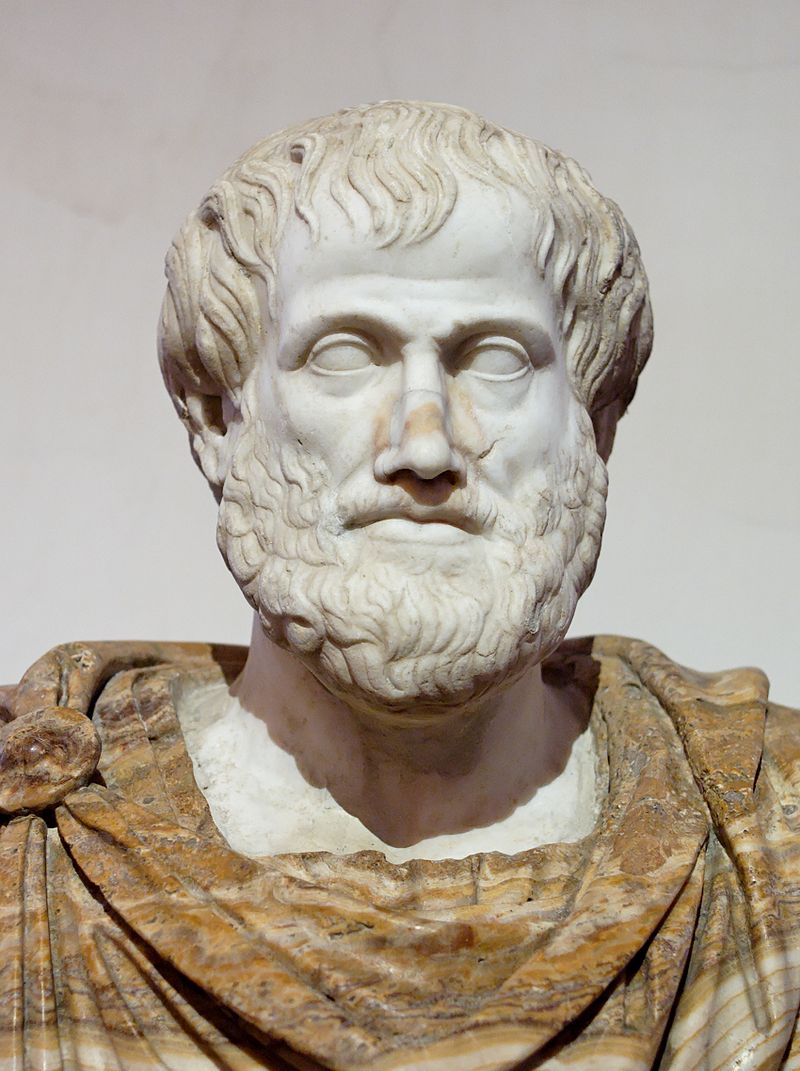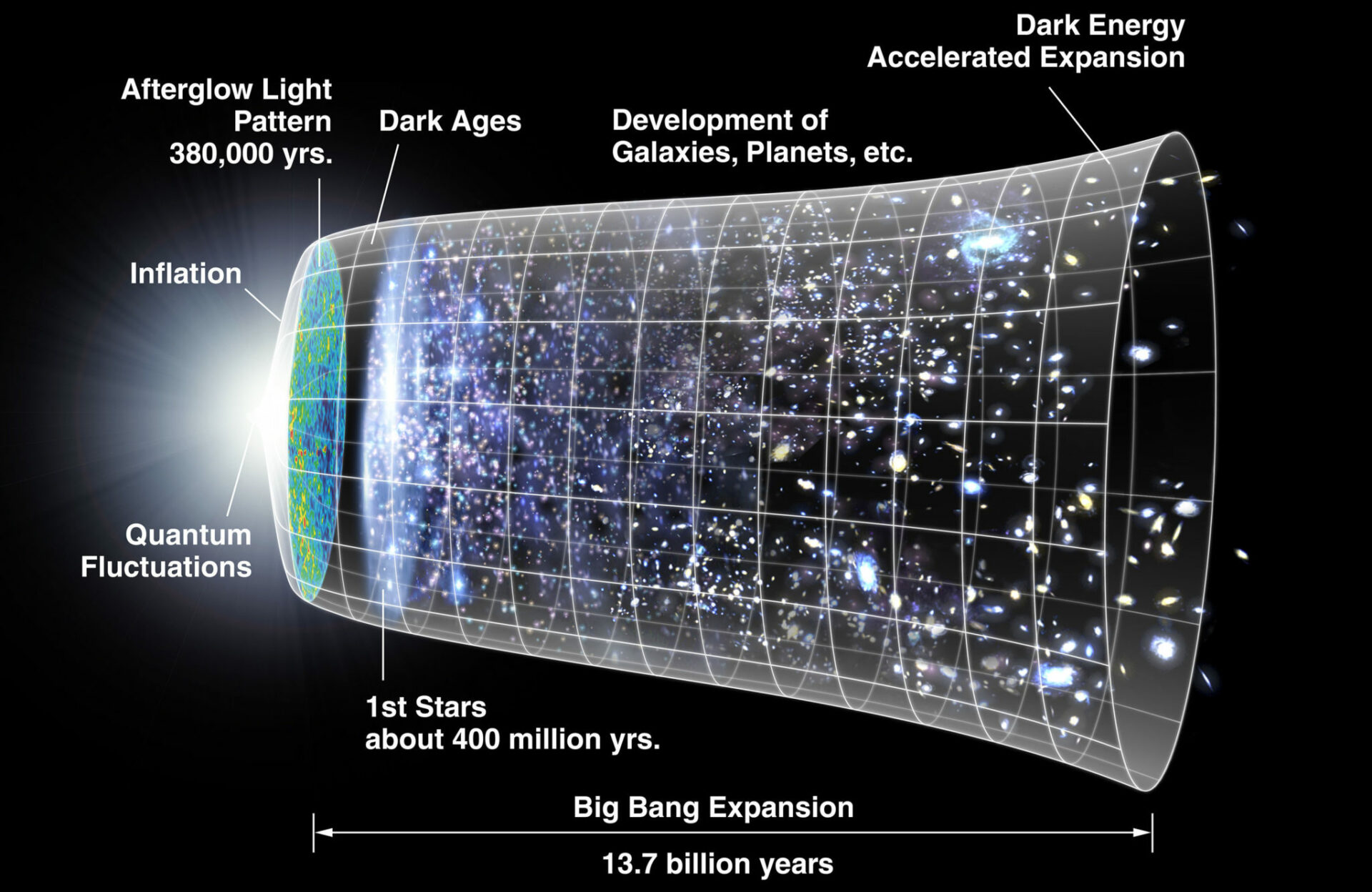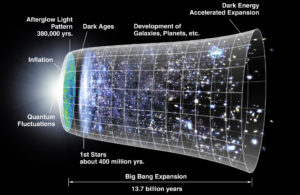
by Barry Tikkanen | Feb 11, 2019 | Debate, Reason, Slider
Collected and presented by Barry Tikkanen
Logical fallacies are errors in reasoning, in their basic form. Why is it important to recognize logical fallacies in a debate, and to avoid them in your statements and arguments? Practicing these concepts can improve your critical thinking skills, as well as help you find the truth behind the information you encounter. This can also prove useful during encounters with the occasional spin doctor or wordsmith. Fallacies are often propagated by those who argue based on false assumptions or flawed reasoning and premises. While we will be discussing some specific errors, there are far more types of fallacy than are noted here.
- Ad hominem
- Meaning “Against the person.”
- Reducing the credibility of the opposition by attacking them personally for who they are or actions they’ve taken and not addressing their arguments or statements.
- Because the politicians had an affair, how can we trust their judgment regarding health care reform? (However, the same concerns may be useful in considering their positions on marriage reforms.)
- Ad ignorantiam
- Argument to ignorance
- The fallacy of assuming something is true simply because it hasn’t been proven false. Essentially trying to switch the burden of proof to the person that isn’t making the claim that requires proof.
- Prove that God isn’t real, and I’ll stop believing.
- Argument from authority
- There are many subtypes of the argument from authority relating primarily to the source. Argument ad populum “ a belief must be true because it is popular. Also, the argument from antiquity “ longevity of belief implies truth in this instance.
- Stating that a claim is true because a person, group, document or tradition of perceived authority says it is true. While, it is reasonable to give more credence to claims about a topic from those with the proper background, education, and credentials, or to be suspicious of authoritative statements made by someone without proper credentials, the truth of a claim should ultimately rest on logic and evidence, not the authority of the person promoting it.
- A doctor claims that MMR vaccines cause more harm than good, despite overwhelming test data to the contrary.
- Argument from final Consequences
- An attempt to motivate belief with an appeal either to the good consequences of agreeing/believing or the bad consequences of disagreeing/disbelieving.
- Pascal’s Wager: (In a nutshell) It is a better idea to believe in God than not to believe, just in case God exists.
- Argument from Personal Incredulity
- Believing a concept or process is false because one can’t explain or understand the concept or process.
- As an example, arguing that one cannot imagine the complexity of life resulting from evolution, does not preclude evolution as the explanation for the diversity of life.
- Confusing association with causation
- Assuming cause and effect for two variables simply because they occur together. Though there may be an association, one must be cautious as to the true nature of the relationship.
- Assuming that because church attendance and illegal drug use are on the rise, and concluding that one causes the other. The previous example would be a fallacy, as it is equally likely that it is a coincidence or that unknown factors are involved.
- Confusing currently unexplained with unexplainable
- Failure to produce a sufficient explanation for a process does not make it infinitely unexplainable, nor does it cause it to fail the laws of nature in favor of magical means.
- While abiogenesis – the beginning of life on Earth through chemical means – is not fully understood, this gap in our knowledge does not require that life began by some supernatural intervention.
- False Continuum
- The false notion that because there is no boundary between two extremes, there is no real distinction between the points.
- There is a fuzzy line between religious believers and fundamentalist terrorists. Therefore they are the same thing.
- False Dichotomy
- Oversimplification of a group or continuum of options into merely two choices.
- Either a Creator brought the universe into existence, or the universe came into existence out of nothing. (Incidentally, modern theory infers that the something that existed before the rapid expansion that created the universe as we know it may have been around for an extremely long time.)
- Inconsistency
- The flip side to cherry picking, or quote mining, inconsistency applies rules to one belief, claim, or concept but not to others.
- Requiring that a specific creation myth is taught in schools while advocating that the myths of other cultures should not be taught.
- Non-Sequitur
- Meaning “Does not follow.”
- Simply put, stating, as a conclusion, something that does not strictly follow from the premises of the argument. While all logical fallacies technically fit this category, this title is reserved for those fallacies that defy other classifications.
- Buy this widget, and everyone will envy you.
- Post-hoc ergo propter hoc
- aka “Fallacy of False Cause” (literally: “after this, therefore because of this”)
- Assuming that because one thing occurred after another, it must have occurred as a result of it. Chronological order alone does not provide enough cause.
- When I touch my lucky rabbit foot before the game, I win.
- Reductio ad absurdum
- Meaning “Reduction to the absurd”
- More recently it has been used to show an abuse of this style of argument by stretching the logic to force an absurd conclusion. Not to be confused with the legal definition by the same name.
- If you don’t believe in unicorns, you must not believe in the pyramids in Egypt, since you have seen neither.
- It is important to note, that reductio ad absurdum is still a valid strategy when used in the proper format. “In formal logic, the reductio ad absurdum is a legitimate argument. It follows the form that if the premises are assumed to be true it necessarily leads to an absurd (false) conclusion and therefore one or more premises must be false. The term is now often used to refer to the abuse of this style of argument, by stretching the logic to force an absurd conclusion. … The term is now often used to refer to the abuse of this style of argument, by stretching the logic to force an absurd conclusion.”**
- Slippery Slope
- Assumes that one thing must lead to another. The argument begins by suggesting that one thing will lead to another, and another, and before we know it we’ll be doing something that we don’t want to do.
- Legalizing same-sex unions will lead to same-sex marriages, eventually leading to forced same-sex marriages/lessen the sanctity of “traditional” marriages/other crazy impossibilities.
- Special pleading, or ad-hoc reasoning
- In essence, trying to fix the results of an argument or test that has already failed by proposing or attempting to introduce new information and arguments to the debate.
- The psychic could have provided a better reading had the participants provided better responses to the inquiries posed.
- Straw Man
- Establishing an extremely reduced version of an opponent’s argument or position, in an attempt to set oneself up to argue against a more easily defensible position.
- Argument 1: We should reduce the restrictions on firearms. Argument 2: No, a society with unrestricted access to firearms would be a return to the wild west.
- Tautology
- aka Circular reasoning, “No true Scotsman,” others
- An argument is circular if its conclusion is among its premises.
- A simplified and less graphic telling of “No true Scotsman”: Teacher: All Scotsmen enjoy haggis. Student: My uncle is a Scotsman, and he doesn’t like haggis! Teacher: Well, all true Scotsmen like haggis. Therefore your uncle is no true Scotsman.
- The Moving Goalpost
- Changing the criteria required for proof beyond what was required to meet the initially agreed criteria.
- Evolution can be accepted as true if transitional fossils can be found. Tiktaalik is presented and verified as a transitional species between water and air-breathing animals. A transitional species such as the crocoduck is revealed as the new definition of what is meant by a transitional species. (Apparently, Archaeopteryx doesn’t count.)
- Tu quoque
- Meaning “You too,” aka “Two wrongs make a right.”
- Essentially stating that your error can be overlooked or disregarded because others have committed the same error.
- You can’t accuse me of libel because you were just successfully sued for libel.
- Unstated Major/Minor Premise or Conclusion
- These forms of fallacy are displayed by failing to state explicit arguments at the beginning, or conclusions at the end, of an argument. Often when an argument has reached an impasse, it is a good idea to re-examine the premises and conclusions for omissions. Often seen as arguing to a predetermined conclusion or begging the question.
- Arguing that evolution should find specific transitional species. Assumes 1) specific transitional species exist; 2) specific fossils are in a preserved state; and 3) that the goalpost won’t be moved.
I hope that this discussion will help each of us, in time, to recognize and defuse the fallacies presented by others and allow our arguments to become devoid of fallacy. Though I suppose, in the hands of the more devious these tips could allow some to fight fire with fire. Some sources and additional resources have been provided below.
http://www.logicalfallacies.info/
http://en.wikipedia.org/wiki/Fallacy
http://en.wikipedia.org/wiki/List_of_fallacies
http://www.unc.edu/depts/wcweb/handouts/fallacies.html
http://www.csun.edu/~dgw61315/fallacies.html
http://www.theness.com/how-to-argue/
http://www.theskepticsguide.org/resources/logicalfallacies.aspx
http://leo.stcloudstate.edu/acadwrite/logic.html
http://en.wikipedia.org/wiki/Pascal%27s_Wager
http://en.wikipedia.org/wiki/Straw_man
http://en.wikipedia.org/wiki/No_true_Scotsman
http://en.wikipedia.org/wiki/Tiktaalik
http://en.wikipedia.org/wiki/Archaeopteryx
http://www.youtube.com/watch?v=LNTGmoTb8sw (Kirk Cameron discusses the Crocoduck with Bill O’Reilly)
http://en.wikipedia.org/wiki/Tu_quoque
http://www.mrdeity.com
Special thanks to Wikipedia.com and Google.com for specific examples.

by Barry Tikkanen | Jun 4, 2015 | Recipes, Slider
I made a new casserole that rocks!
Ingredients
12 Slices Chopped Cooked Bacon
12 ounces Shredded Cheddar
1 medium Onion Diced
2 cloves Garlic
Salt and Pepper to taste
32 ounces Frozen Shredded Hash Browns
Preheat oven to 375° F
Directions:
Spray a 13 x 9 inch pan with Non-stick Cooking Spray
Layer pan with:
16 ounces shredded hash browns
1/2 diced onion or leeks.
1 clove of minced garlic
Salt and Pepper lightly to taste
6 ounces of shredded cheddar cheese
6 slices of chopped cooked bacon
16 ounces shredded hash browns
1/2 diced onion
1 clove of minced garlic
Salt and Pepper lightly to taste
6 ounces of shredded cheddar cheese
6 slices of chopped cooked bacon
You should now have two full layers
Cover pan with aluminum foil
Bake for 45 minutes at 375 covered
Remove cover from pan
Bake another 10 minutes at 375 uncovered
Remove from oven
Cool for 5 to 10 minutes
Makes 12 servings. Approximately 210 calories per serving.
Serve


by Barry Tikkanen | Jan 17, 2010 | Reason, Rhetoric, Science, Slider

Download PDF
Age of the known universe 13,700,000,000 years ago
http://www.astro.ucla.edu/~wright/age.html
The age of the universe can be estimated through several methods such as, cosmological models, age of the chemical elements, the oldest star clusters, and the oldest white dwarf stars. The measurements of chemical elements, star clusters and white dwarf stars yield a mean age of the universe of 12.94 billion years +/- 0.75 billion years. This figure is consistent with the cosmological models that place the age of the universe at 13.7 billion years +/- 0.2 billion years. The observable age and location of the universe of stars as determined by various methods is consistent with the Big Bang model.
.
Earliest Stars and Galaxies form 13,500,000,000 years ago
http://starchild.gsfc.nasa.gov/docs/StarChild/questions/question55.html
As areas of matter coalesced over the first 200 million years, gravity wells began to become dense enough for fusion to occur. This resulted in formation of the first stars and galaxies. Life as we know was made possible through the various cycles of star formation and decay, subsequently resulting in the elements found in the universe today.
.
Age of the Sun 4,570,000,000 years ago
http://academic.brooklyn.cuny.edu/physics/sobel/Nucphys/sun.html
The sun and the surrounding solar system formed approximately 4.57 billion years ago as can be demonstrated by various computer models, radiometric data, and cosmochronology. Cosmochronology is a newer form of radiometric dating that typically relies on uranium and thorium decay. Based on stellar mass and an understanding of hydrogen the Sun has an estimated lifespan of approximately 10 billion years. This places the Sun near the middle of it’s active lifespan currently.
.
Age of the Earth 4,540,000,000 years ago
http://pubs.usgs.gov/gip/geotime/age.html
Direct measurements of the age of the Earth are not possible through rocks found on the surface to date due to substantial recycling of the Earth’s surface through the process of plate tectonics. However, through measurement and comparison of materials found on Earth dating to as far back as 4.4 billion years, as well as radiometric dating of uranium isotopes that can be compared to other bodies in the solar system, the age of the Earth can be reasonably estimated to be 4.54 billion years old.
.
Earth – Moon impact 4,530,000,000 years ago
http://www.dailygalaxy.com/my_weblog/2007/07/the-theia-hypot.html
The currently held hypothesis for the formation of the moon relies on a major impact between the early Earth and an approximately Mars sized body that formed in orbit with Earth. This secondary body has been given the name Theia after the Greek Titan of the same name that was (fittingly) said to have given birth to the Moon. The impact of Theia with Earth is believed to have ejected a significant portion of Earth’s silicate mantle as well as Theia’s mantle and likely a portion of it’s own core to later form the Moon some 10 million years after the initial formation of the Earth. This method of formation is often referred to as the Giant Impact hypothesis.
.
Abiogenesis 4,404,000,000 years ago
http://student.science.uva.nl/~jckastel/html/abiogenesis.pdf
“We often hear the question how evolution explains the origins of life. The short answer: it doesn’t.” The origins of life lie in the subject of abiognesis. Abiogenesis may have begun as early as 120 million years after the formation of the Earth and Moon. While there are very many methods under consideration in the field of abiogenesis, what is generally agreed upon is that the chemicals and processes necessary to begin were available on Earth as early as 4.4 billion years ago. While fossil evidence is at best extremely difficult and somewhat ambiguous, fossil evidence of some nearly first life is believed to exist in the form of early ancestors of modern stromatolites.
.
Snowball Earth 650,000,000 years ago
http://www.snowballearth.org/
A period of global glaciation in which ice can be convincingly demonstrated to have covered the earth from pole to pole. While three such events are believed to have occurred, the last and greatest is believed to have occurred 650 million years ago. Early events are thought to have occurred 710 million and 2.2 billion years ago.
.
Cambrian extinction (trilobites) 488,000,000 years ago
http://park.org/Canada/Museum/extinction/cammass.html
There were at least four major extinctions during the Cambrian period resulting in the mass extinction of most of the sponges, shelled creatures, and other invertebrates that had evolved by this time. A period of cooling and glaciation is the currently held belief as to the Cambrian extinctions.
.
Permian extinction (majority of all life) 251,000,000 years ago
http://park.org/Canada/Museum/extinction/permass.html
This extinction event is considered to be the most far reaching and devastating extinction event in the history of life on Earth. The cause of this extinction is not truly known, but glaciation and volcanic activity are the most widely accepted. It is estimated that ,ore than 98% of all life on Earth fell extinct during this time.
.
End of Cretaceous Extinction (dinosaurs) 65,500,000 years ago
http://park.org/Canada/Museum/extinction/cretmass.html
While it may not have been the big one, this is the probably the most well known extinction event in the public mind. The K-T extinction is the event that killed the dinosaurs and made way for the rise of mammals. The general consensus is that a major impact from a meteor caused this extinction.
.
Last common ancestor of all great apes 14,000,000 years ago
http://www.primates.com/pierolapithecus/index.html
The last common ancestor of orangutans, and the African apes (including chimpanzees and bonobos, humans, and gorillas) is believed to have lived some 12 to 14 million years ago. The current contender for this role is pierolapithecus, this species lived in the proper time frame proposed by geneticists, and holds all the necessary physical traits.
.
Hominids and Apes split 6,500,000 years ago
http://anthro.palomar.edu/hominid/australo_1.htm
Early hominids are believed by geneticists to have developed bipedal locomotion approximately 6.5 million years ago. The earliest hominid known to possess this method of upright walking is currently that of ardipithecus ramidus dating to 4.4 million years ago.
.
Stone Age begins 2,500,000 years ago
http://history-world.org/stone_age.htm
The Stone Age is named after the predominant form of tool usage of the time and stretches to the time of Neanderthal and Early Modern Humans. There have been discoveries of cave paintings from the later portions and stone tools from throughout this period.
.
Neanderthal 150,000 to 30,000 years ago
http://www.ecotao.com/holism/hu_neand.htm
Neanderthal is a divergent species of hominid believed to be less adaptable and less capable of communication than Early Modern Humans. This lack of communication and adaptation is considered by many to be the downfall of this species.
.
European Early Modern Humans (Cro-Magnon) 30,000 years ago
http://archaeology.about.com/od/earlymansites/a/cro_magnon.htm
Early modern humans while possibly a bit more physically robust than us are often concerned in many other ways indistinguishable from modern humans. Neanderthals are believed to have simply lost the competition with Early Modern humans.
.
Young Earth Creation 6,000 to 10,000 years ago
http://www.nwcreation.net/ageyoung.html
Young Earth Creationists place Earth’s creation at 6,000 to 10,000 years ago.
.
Bronze Age 5,300 to 3300 BC
http://mygeologypage.ucdavis.edu/cowen/~gel115/115CH4.html
Humans entered the Bronze Age as metal smiths began to create various alloys of copper, specifically Bronze.
.
Iron Age 3,500 to 1500 BC
http://www.bu.edu/anep/Ir.html
The Iron Age is generally broken into two parts, the first overlapping the late Bronze Age. This age heralded some of the earliest advancement in society.
.
Beginning of usage of the Gregorian calendar 1582 AD
http://www.fourmilab.ch/documents/calendar/
Created to better attune the Julian calendar to the true cycle of the Earth around the Sun, and the Moon around the Earth. Also, to better schedule Christian holy days with the lunar cycle. Accurate to approximately 1 day in 3300 years.
.
Present day 2010 AD
.
Eschatology: Armageddon / Revelations / Rapture / etc. 2000 / 2012 / In our lifetime / Soon / etc.
http://en.wikipedia.org/wiki/Eschatology
Nearly all faiths and belief systems have ideas about the topic of Eschatology. On that note…
.
Life on Earth ceases 1,500,000,000 years from now
http://www.astronomycast.com/astronomy/cosmology/ep-86-the-end-of-the-universe-part-1-the-end-of-the-solar-system/
As the normal process of the expansion of the Sun, the Earth will eventually rise in temperature until the atmosphere and surface water have boiled into space, thus ending life on Earth.
.
Andromeda and the Milky Way merge 3,000,000,000 years from now
http://www.galaxydynamics.org/papers/GreatMilkyWayAndromedaCollision.pdf
Hold on for a bumpy ride, the Milky Way and Andromeda galaxies are on a collision course. Due to the vast spaces between stars, it is quite likely that a majority of stars will survive intact, as the individual stars pass harmlessly through interstellar space during the collision.
.
Sun becomes a red giant 5,500,000,000 years from now
http://www.space.com/scienceastronomy/090803-mm-sun-death.html
While there is an astronomically small chance the Sun will be wiped out in the merging of the Andromeda and Milky Way galaxies, it is extremely unlikely. However that doesn’t mean the Sun will escape death. The Sun will have used up enough of it’s hydrogen resources about 5.5 billion years from now. This will send the Sun into it’s red giant phase. The long dead Earth is expected to yield to the tidal forces of the sun and be engulfed by the Sun during this time.
Sun completes red giant phase and becomes a white dwarf 8,000,000,000 to 10,000,000,000 years from now
Upon expending most of the remaining hydrogen fuel the Sun will become a white dwarf.
.
Last stars burn out 1020 to 1040 years from now
http://en.wikipedia.org/wiki/Future_of_an_expanding_universe
As the end of the universe nears, production of stars will fail. Existing stars will burn up the last of their fuel supplies and the breakdown of stars into their constituent parts will begin.
Last black holes fade 1040 to 10100 years from now
The last of the black holes created as larger solar mass stars came to an end will fade, slowly leaching out the last of their absorbed energy.
Heat death of the Universe 10×10100 to 10×101500 years from now
Just as a the heat in an undisturbed room will eventually equalize, so too will the heat of the Universe equalize until a uniformly cold dead Universe is all that remains.

Additional references:
http://en.wikipedia.org/wiki/Timeline_of_the_Big_Bang
http://en.wikipedia.org/wiki/Giant_impact_hypothesis
http://en.wikipedia.org/wiki/Stellar_evolution
http://blogs.discovermagazine.com/80beats/2010/01/06/hubble-spies-baby-galaxies-that-formed-just-after-the-big-bang/

by Barry Tikkanen | Oct 16, 2006 | Recipes, Slider
Prep Time
Approximately 90 minutes
12 to 15 servings
With Tofu and Dairy cheese, Recipe makes 15 pieces of about 320 calories each, or 12 pieces of about 375 calories. Ground Beef and Turkey will increase the calorie count. Vegan cheese alternatives will typically reduce the calorie count.
Various combinations may contain significantly different sodium levels.
Fresh(er) ingredients are recommended, but prep time may be extended.
Ingredients
2 tbsp. (30 ml) Vegetable/Canola/Olive Oil
14 oz. to 16 oz. (425 g) Firm Tofu (crumbled), Ground Turkey, or Ground Beef
16 oz. (450 g) Mushrooms (Fresh sliced Portabella, Button or canned and drained Button Mushrooms)
1 medium Onion diced
28 oz. (795 g) Crushed Tomatoes
6 oz. (170 g) can Tomato Paste
22 oz. (625 g) Ricotta Cheese or 14oz. silken tofu
18 oz. (510 g) Cottage Cheese or 14 oz. crumbled firm tofu
5 oz. (140 g) Baby Spinach or canned and drained Spinach
16 oz. (455 g) Lasagna noodles (regular or whole grain)
12 oz. (340 g) Mozzarella or Vegan Mozerella (shredded)
Garlic and Oregano to taste
Instructions
Prep time 30 min. Cook time 1 hour. Warm Oil in a large skillet.
Brown Ground beef/tofu/turkey over medium heat.
Add mushrooms to meat/tofu, cook mushrooms halfway.
Add Onions to mixture and Mushrooms, cook onions halfway.
Drain oil and/or fat from mixture.
Add Crushed Tomatoes to mixture, simmer for 5 minutes.
(Save 4 to 6 tbsp. (75 ml) of crushed tomatoes for later)
Add Tomato Paste. (open both ends of paste and use bottom to push through.)
Season with Garlic and Oregano to taste.
Simmer for 5 more minutes.
Set aside, preferably in the refrigerator.
In a large bowl, combine Ricotta and Cottage Cheese.
Add spinach to cheese mixture. (Blanch/parboil and cool fresh spinach for best results.)
Season with Garlic and Oregano to taste.
Set aside.

Do not precook the noodles!
Coat the bottom of a 13 x 9 casserole dish with the remainder of the crushed tomatoes.
(You did save some crushed tomatoes, didn’t you.)
Lay 4 noodles side by side and centered in the pan.
Spoon nearly half of sauce mix on the noodles. Spread evenly.
Sprinkle with 2 oz. (55 g) Mozzarella.
Lay about 5 noodles side by side in the pan.
(You may need to slightly overlap the noodles.)
Spoon half of cheese mix on the noodles. Spread evenly.
Sprinkle with 2 oz. (55 g) Mozzarella.
Lay about 5 noodles side by side in the pan.
Once again, spoon most of the remaining sauce mix on the noodles. Spread evenly.
Sprinkle with 2 oz. (55 g) Mozzarella.
Lay about 5 noodles side by side in the pan.
Spoon half of cheese mix on the noodles. Spread evenly.
Sprinkle with 2 oz. (55 g) Mozzarella.
Lay about 5 noodles side by side in the pan.
Spoon remaining sauce mix on top. Spread evenly.
Sprinkle with remaining Mozzarella.
Cover pan with aluminum foil.
Bake for 30 minutes at 400°F. (205°C)
Remove foil.
Cook an additional 15 minutes at 400°F. (205°C)
Remove and let rest for 15 minutes.
Serve & Enjoy…

–Barry Tikkanen













